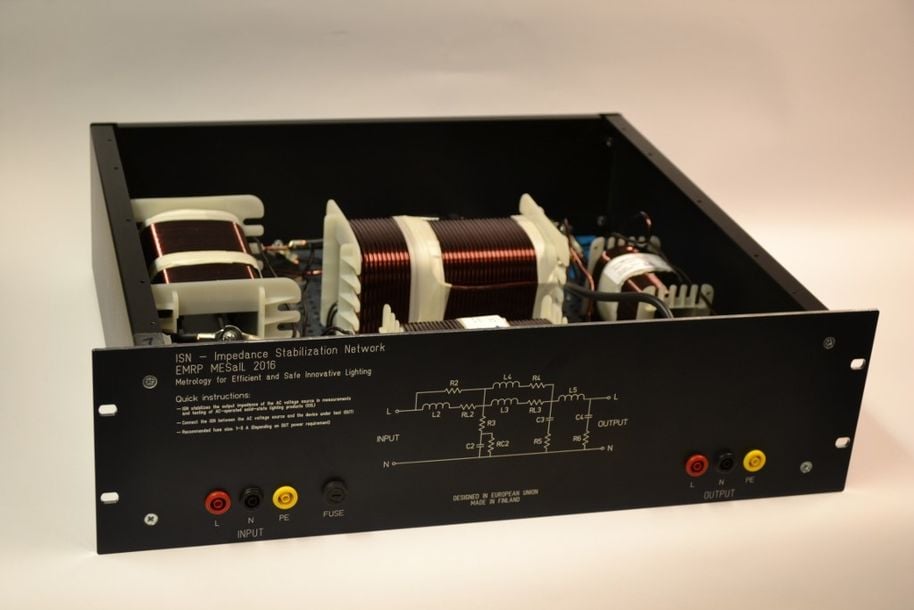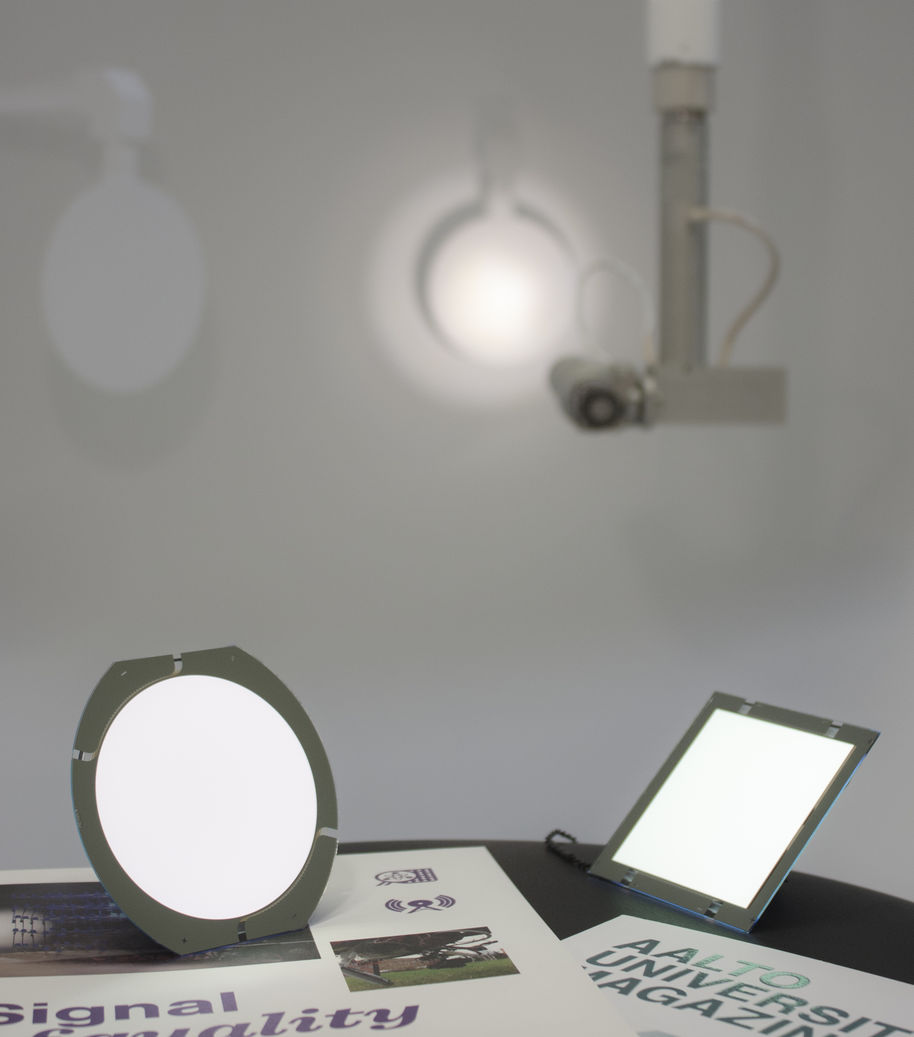MESaIL (2014-2017)
Background
The project focused on improving the measurement accuracy of novel lighting products such as LEDs and OLEDs. Special attention was paid to the ageing characteristics and the electrical properties of the lighting products. In addition, new methods for improving the measurement accuracy in test laboratories were developed.
The key activities of Metrology Research Institute in this project are listed below.
Impedance stabilization network
The electrical properties of LED lamps are significantly more complicated than those of incandescent lamps. In order to get consistent and representable results, special attention needs to be paid to properties of the power sources used to drive the lamps. One of these properties is the output impedance of the power source which can vary significantly between different power sources as well as between power sources and the mains output. To this end, Metrology Research Institute, along with other European partners, constructed an impedance stabilization network (ISN) to be used between the power source and the LED.
Contact person: Alexander Kokka

Development of OLED measurement capabilities
Organic light-emitting diodes (OLEDs) come in many form factors. In addition to differences in the size of the emitting area, the properties of the OLEDs can vary a great deal, with diffuse, mirrored, transparent, and flexible OLEDs all available on the market. The properties of OLEDs introduce new design possibilities but also create challenges for accurate photometric measurements.

Metrology Research Institute studied the measurement of the luminous flux output of OLEDs in the integrating sphere setup. Special attention was paid to the effect of the orientation of the OLED on the light output. After correcting for the spatial nonuniformity of the sphere, it was found that the luminous flux output of some of the OLED panels exhibit operating orientation dependence. The results of this study have been reported in [1].
The organic compounds in OLEDs may age with time and especially under ultraviolet (UV) radiation. To study this effect, Metrology Research Institute performed controlled UV ageing tests on several types of OLEDs. The luminance output of the OLED panels was measured periodically. Ageing due to UV radiation was found to decrease the luminance output of the panels significantly.
Contact person: Janne Askola
More information about the project can be found at the project website:
http://www.eng62-mesail.eu/typo3/
References
[1] J. Askola, T. Poikonen, T. Pulli, and E. Ikonen, "Characterizing an integrating sphere photometer for measurements of solid-state lighting panels," in Proc. CIE 2017 Midterm Meeting, Jeju, South-Korea, October 23–25, 2017.
- Published:
- Updated: